 |
||
|
||
| ||
The annual Taiwanese showcase took place just a month ago - this year the Computex 2003 was put off until autumn because of the SARS raging in June and July. It's arguable whether the SARS was that terrible at all. Who could benefit from such panic is also a question to discuss. Anyway, SARS (or people that strained the situation) had a strong economic impact on the Taiwanese and Chinese manufacturers and considerably affected the Computex 2003. There were fewer booths, the way they were arranged didn't pleased the participants either, but the showcase did take place. In spite of the efforts of Computex's organizer, Cetra, there were fewer pressmen and one could easily find a free seat in the press center (in contrast to CeBIT where it is a real problem). However, one could feel the oncoming even yet in the airport that was packed with advertisements of PC components. 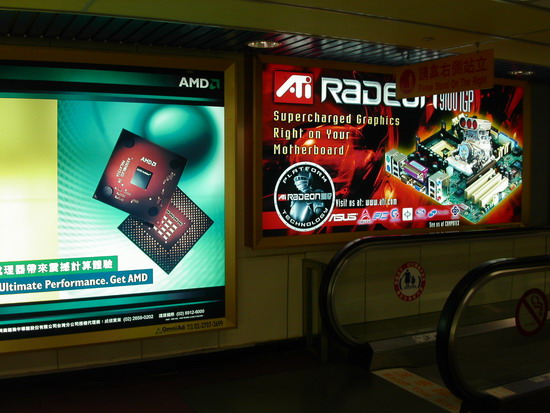 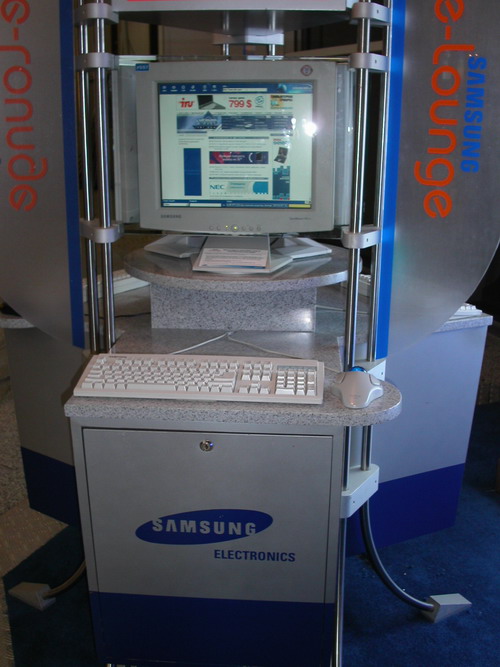 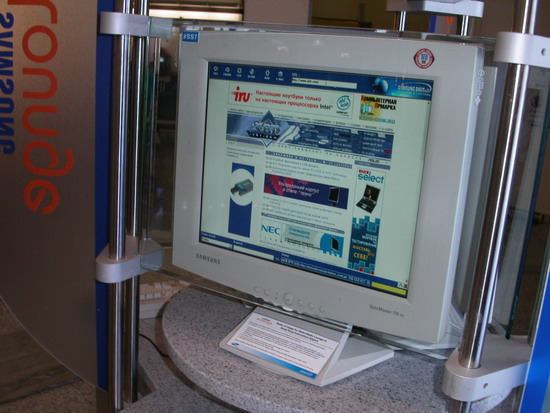 So, the showcase kicked off... I couldn't say the halls were filled up with people but the atmosphere got much more animated. 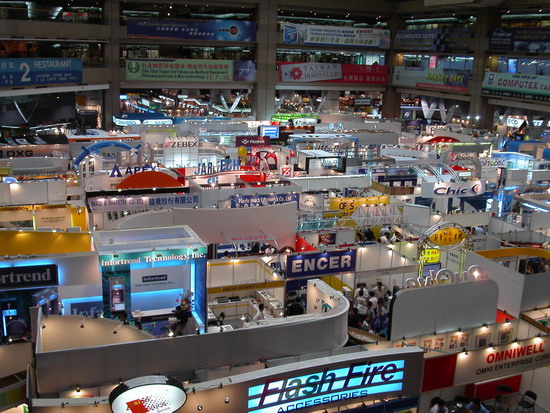 Butterflies were again flying around the booths, 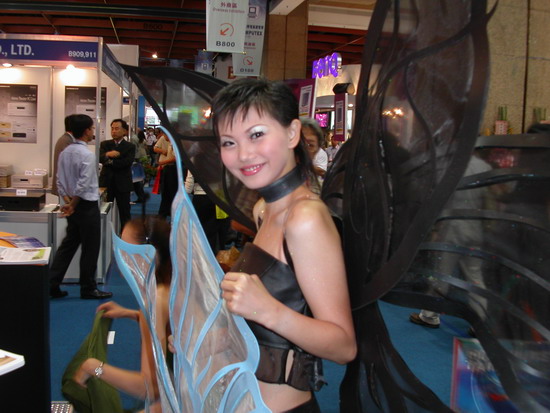 which had dozens of various interesting and funny exhibits, like this CD
case.
I started with the ASUS booth simply because I was informed about the oncoming announcement of its collabortion with ATI. As you perfectly know, they didn't announce it that time, and the people
gathered there were just eyeing the girls from AMD who conducted a contest.
The ASUS booth housed a lot of interesting solutions. Among them were mainboards: 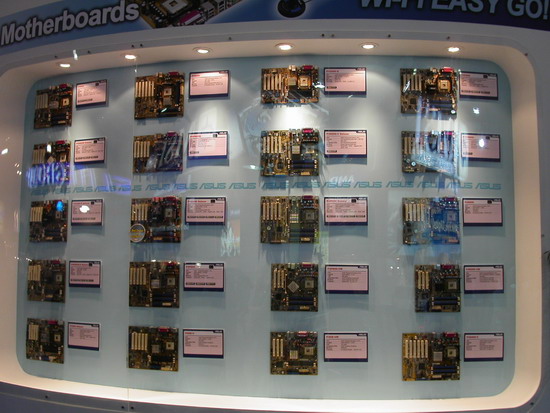 The P4R800-V Deluxe based on the ATI Radeon 9100 IGP was probably the most interesting product there. It housed chips from such companies as SiS, ATI and even VIA (audio). :-) 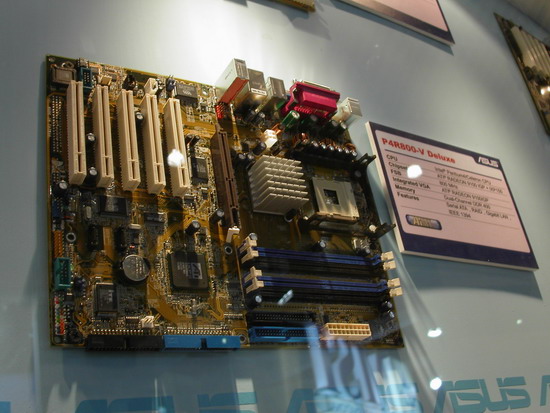 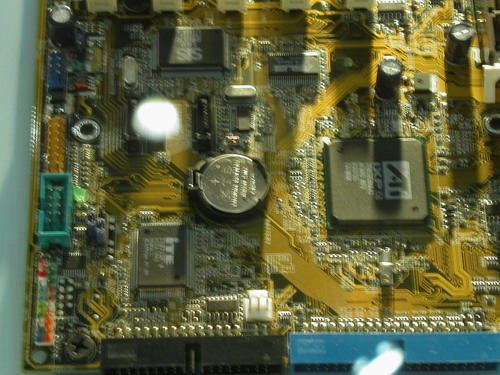 The board supports Pentium 4/Celeron with FSB up to 800 MHz (!), Radeon 9100 IGP + IXP150, dual-channel DDR400, Serial ATA RAID, Gb LAN, and IEEE1394 interfaces. Another peculiar exhibit based on the ATI Radeon 9100 IGP was the P4800-VM board. It uses another south bridge - IXP200 and features more decent specs: only 6-channel audio and 10/100 LAN. 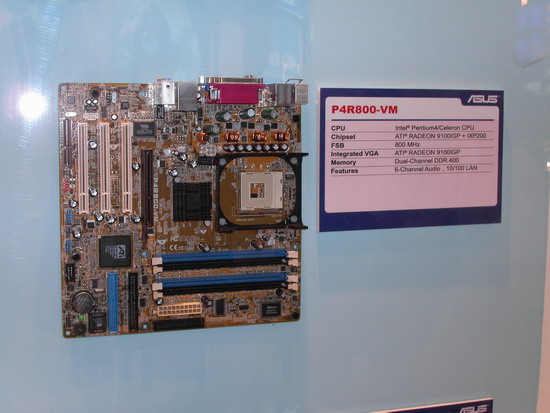 ASUS also demonstrated its video cards, though there was nothing extraordinary to show until the release of video cards on ATI's chips. 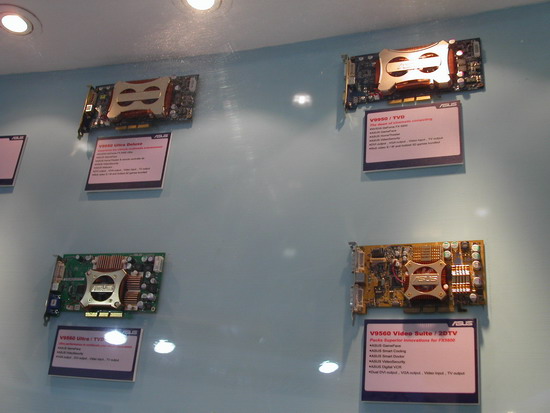 The company has some achievements in the sphere of TV signal processing, and in Taipei they displayed the TV/FM-Tuner that supported video editing, teletext and ASUS VideoSecurity. 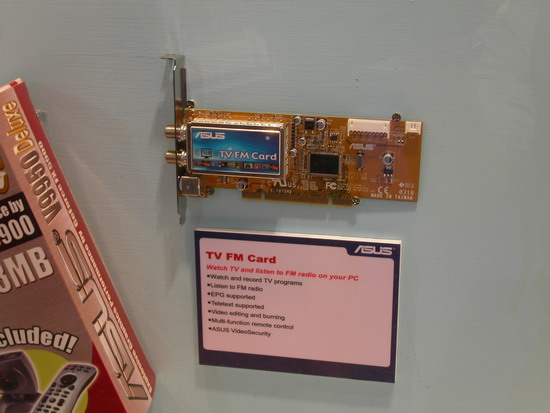 Do you remember cell phones ASUS showed at CeBIT? This time instead of three models we were shown only one - J-100. This phone is already produced, and as soon as it gets certified, it will hit the streets. 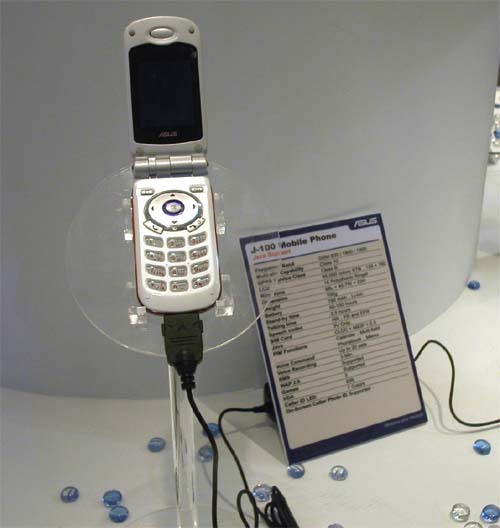 Here are its brief specs:
The next photo shows a camera for this phone which can be attached instead of the back panel, and a HandsFree module: 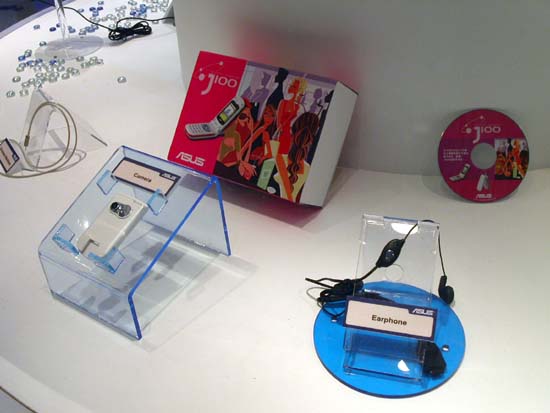 But apart from cell phones mobile technologies also cover notebook PCs and PDAs. One of the most interesting notebooks was S2N (S200N). This is an ultra-portable S200 now based on the Intel Centrino and coupled with a 1GHz Pentium-M and 8.9" TFT LCD from Toshiba. 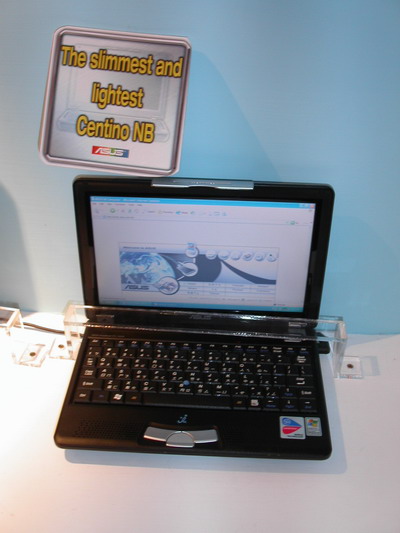 The A2000C(A2C)/A2000S(A2S) notebook is based on the integrated 3D graphics of ATI MOBILITY RADEON 9000, comes with a 15" TFT LCD and Pentium 4 (A2S), Mobile Pentium 4 (A2S) or Pentium 4-M (A2C). The L5000Ga is one of the most powerful models today. The ATI MOBILITY RADEON 9600, 3.2GHz Intel Pentium 4 (HT), high-quality audio, a great number of various inputs/outputs and a unique 15" matrix that delivers viewing angles up to 170 degrees make this notebook a real home multimedia center. 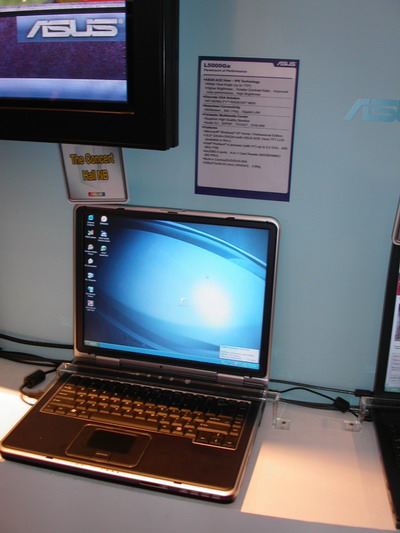 The ASUS MyPal A600 and A620 PDAs are demonstrated with various accessories. 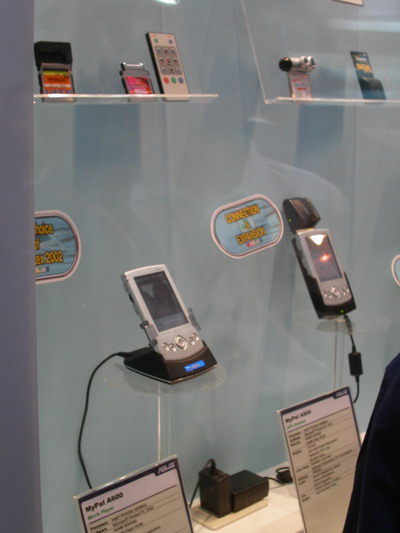
GPRS units for CompactFlash slots for ASUS PDAs, car changer, a GPS
card...
... and other interesting stuff.  As you might know, ASUS has a rapidly developing department dealing with
peripherals, such as Bluetooth dongles, flash storage units...
...card readers and communication modules.
As always, overclocking was an integral part of the show. ASUS made its 3.2 GHz Intel Pentium 4 work at 4.4 GHz. 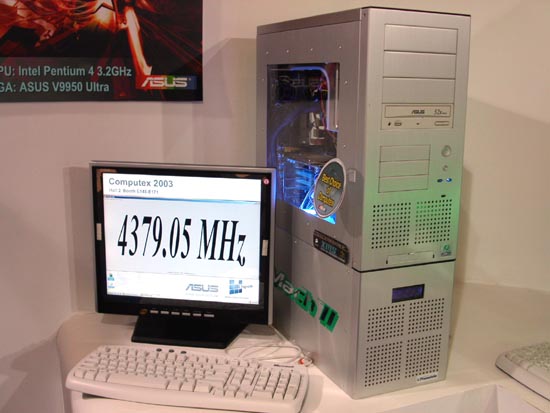 Here are some server solutions from ASUS. 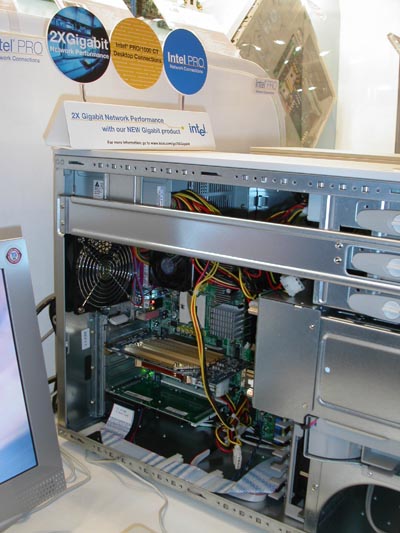 ASUS also offered new software solutions. For example, a special utility helps to find out why the system doesn't produce sound if it's caused by wrong connection of the cables. The beginners should value such help. 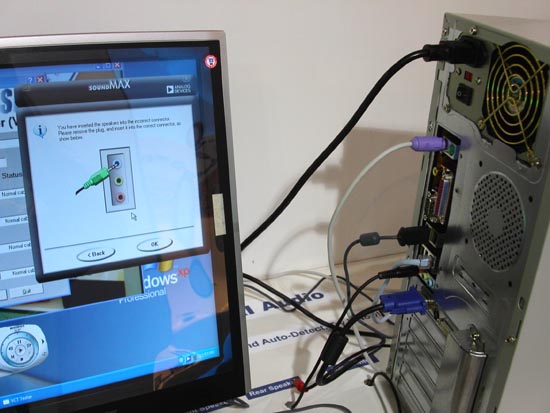 The most interesting news from ASUS came by the middle of the show. Such a poster showed the company's plans for the near future: 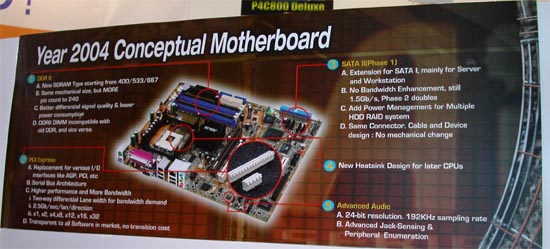 I can't say that the board looks extraordinary though the specs are still impressive: 240pin DIMM DDR-II 400/533/667 modules with a new DDR-I incompatible connector, various PCI Express versions - x1, x2, x4, x8, x16, x32 to replace current PCI and AGP; Serial ATA-II (the SATA-I form-factor wasn't changed), new coolers and a new audio standard - 24bit/192kHz. ASUS also showed a model of the "system of the future", though without any comments. 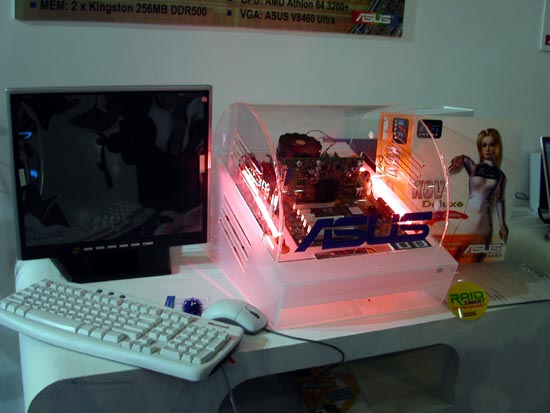 I'm not entirely sure if it was a prototype of a processor with the Prescott core, though it looked very similar to the LGA775 packed chip, you can even see it on the picture where the connector's marking is exposed. The chip of this graphics card is definitely made by ATI.       The pictures perfectly demonstrate the conceptual poster: all the innovations like DDR-II 533, PCI Express, Serial ATA-II are integrated. But the board will remain conceptual for just half a year... The visitors were also offered to play on the most powerful state-of-the-art PC right at the ASUS booth. 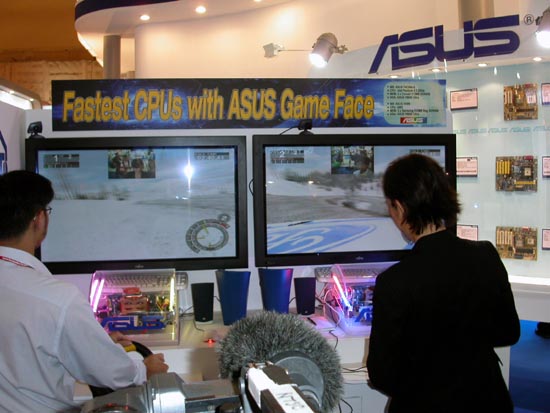
Alexander Vorobiev (vorobiev@ixbt.com)
Write a comment below. No registration needed!
|
Platform · Video · Multimedia · Mobile · Other || About us & Privacy policy · Twitter · Facebook Copyright © Byrds Research & Publishing, Ltd., 1997–2011. All rights reserved. |